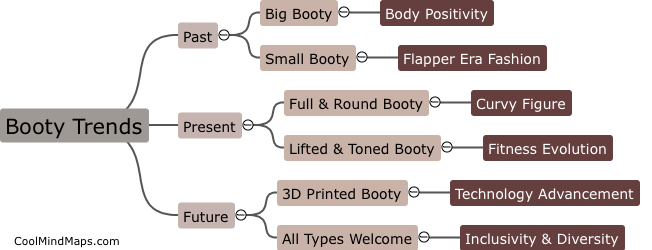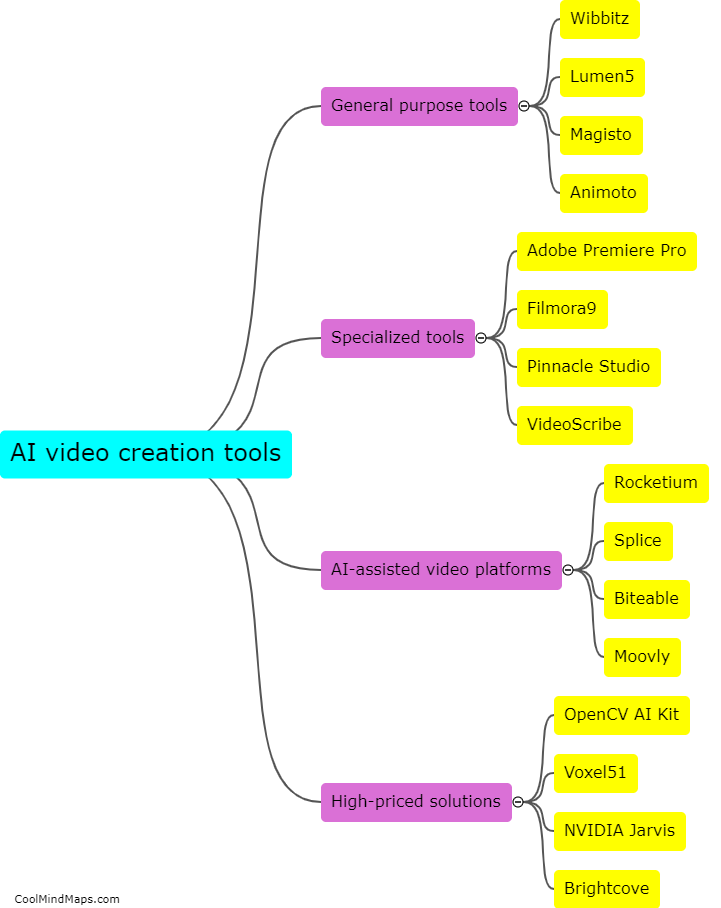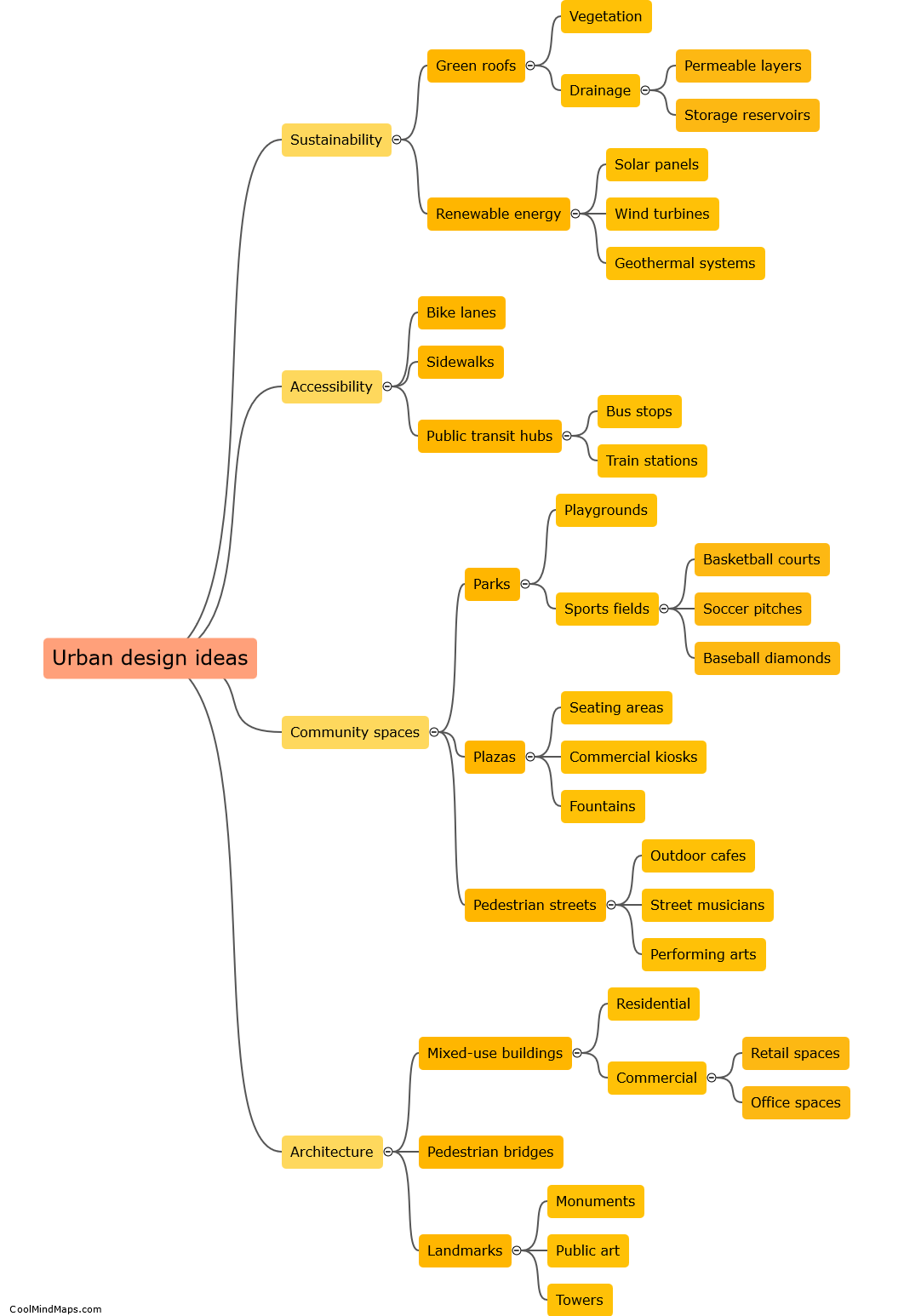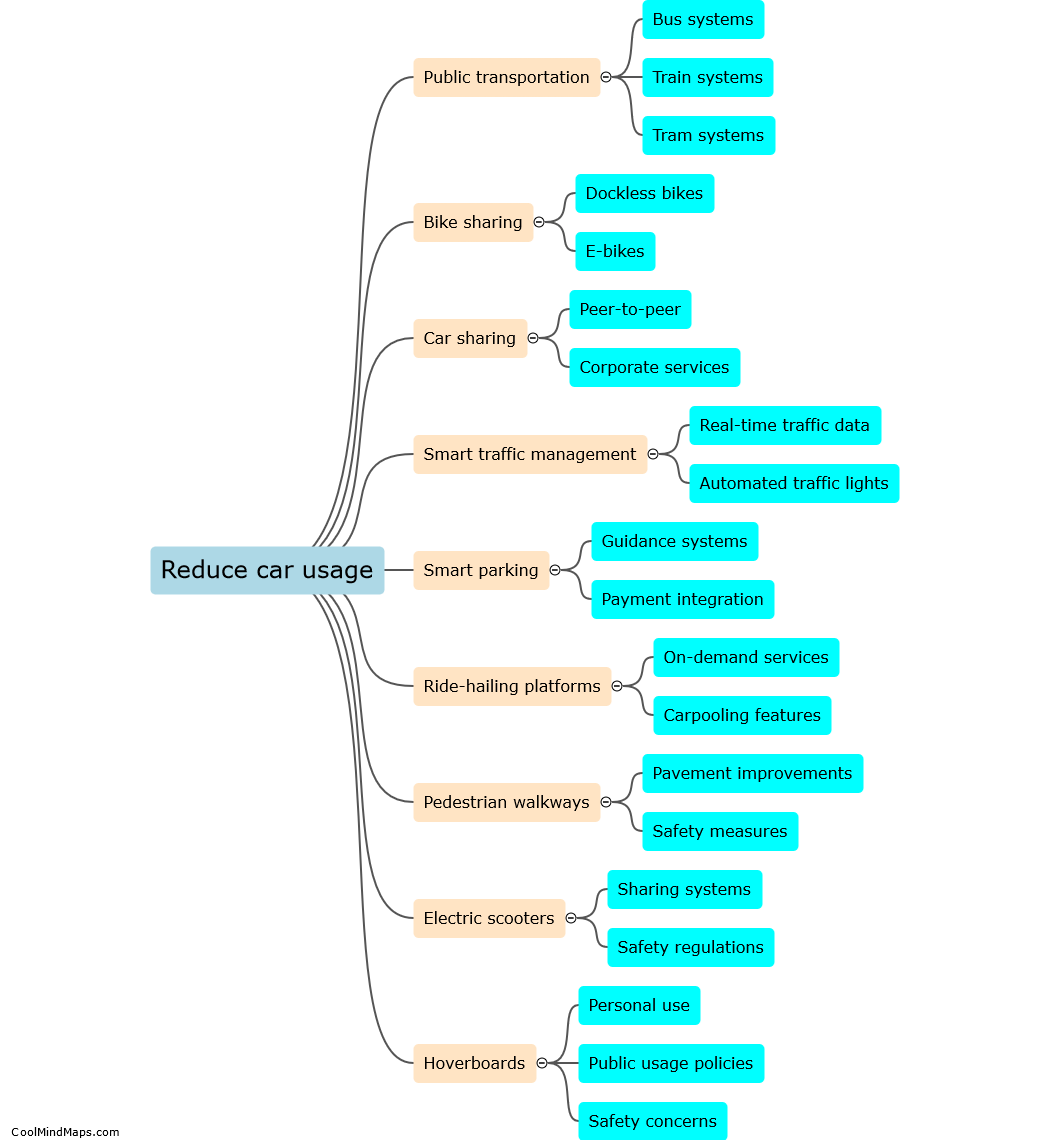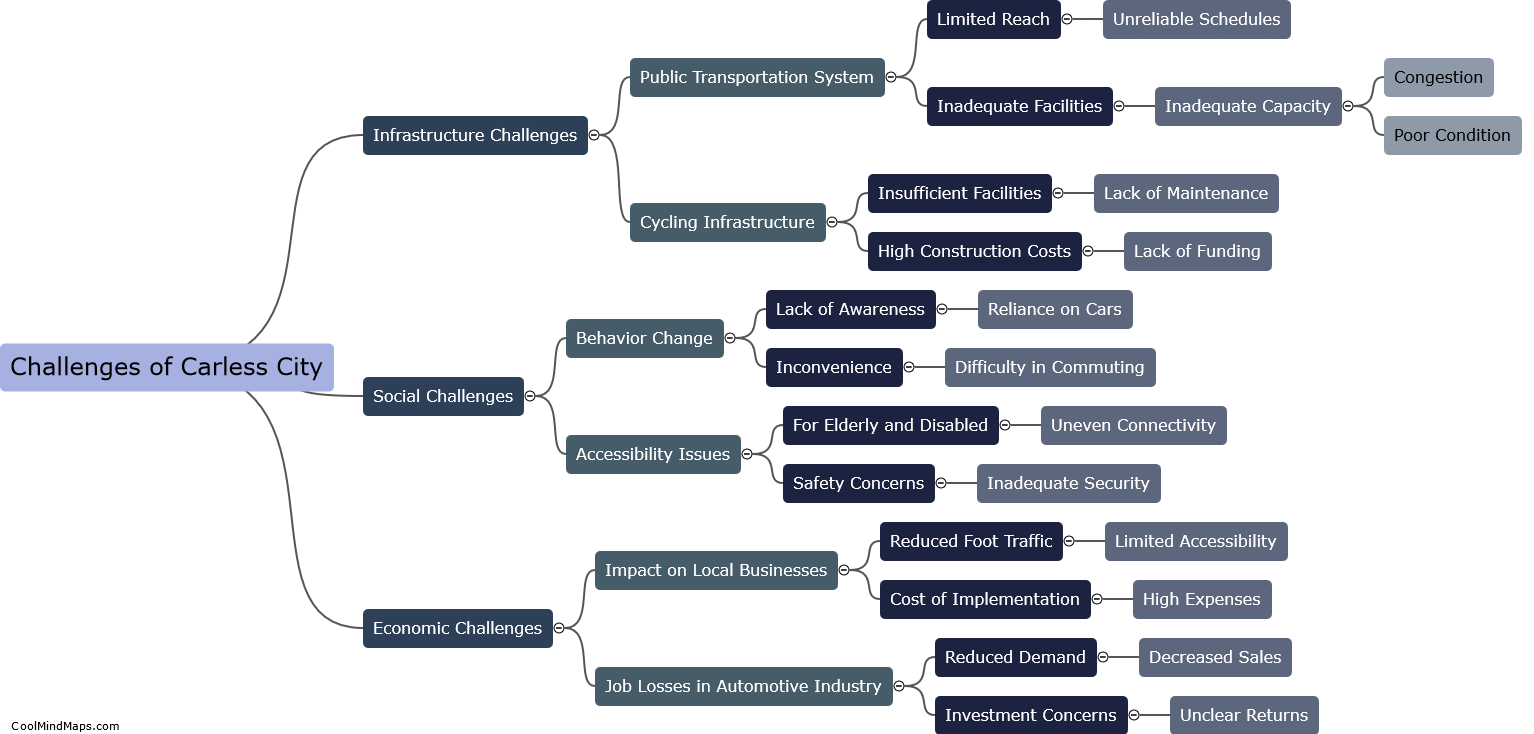What are the benefits of using generative design in cities?
Generative design, a process that uses algorithms to create and explore multiple options for a design, offers several benefits when used in cities. First, it can help urban planning and design teams to generate and evaluate a wide range of potential solutions for an urban challenge. Secondly, generative design can increase efficiency and productivity by enabling designers to rapidly iterate and optimize designs. Additionally, generative design can result in more cost-effective solutions through the efficient use of materials and resources. Finally, by prioritizing sustainability and minimizing negative environmental impacts, generative design can help cities create more livable and resilient urban spaces.

This mind map was published on 14 June 2023 and has been viewed 99 times.
